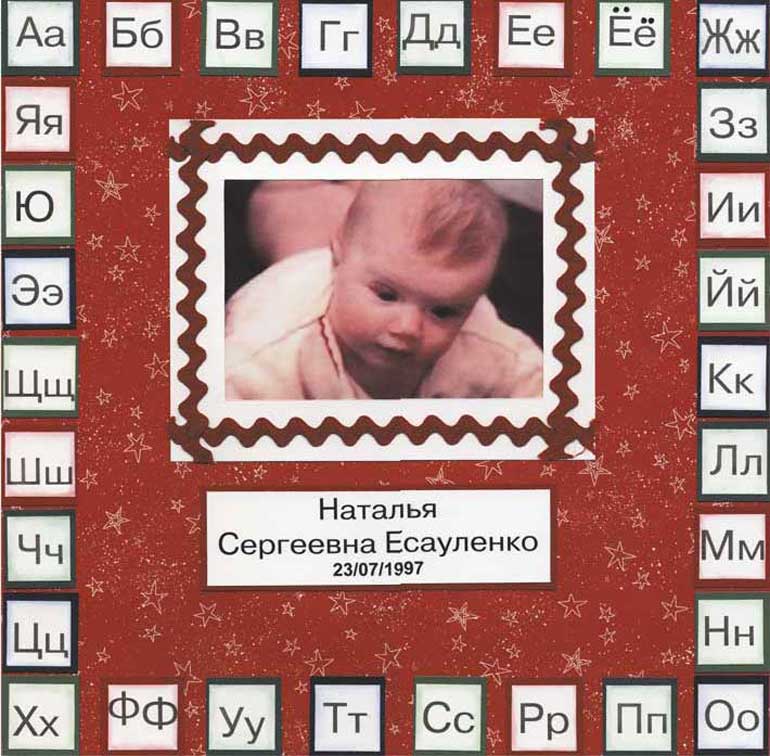In lifebook workshops, I share with parents my belief that the stories of children’s beginnings belong to the children. I offer reassurance that one need not be creative, nor a writer, to create a lifebook.
Together, we brainstorm about what to say and how to say it for the children. I am always moved by the feeling put forth by group members and by seeing burdens lifted from parents for whom a bit of information resonated.
During the process of creating lifebooks, parents decide how to share certain information with their children. Parents who once felt nervous about sensitive conversations become more confident as a result of these discussions.
Why create a lifebook?
Every scrap of knowledge your child has about her early history reduces her uncertainty. Children who do not have information still have questions; it is not unusual for adopted children to fabricate their own explanations for the missing pieces of their stories.
Some children actually believe they “came from” airplanes. Your child may see her airport arrival as the point at which she became “real” for you. Perhaps, as do many of us, you wish her life had begun when you became her parent/s. But our children’s lives began elsewhere — without us. This is their truth. Lifebooks are our best attempts to assist them on their personal paths to self-understanding.
In addition to being a source of information, lifebooks are an effective vehicle for discussion. Opportunities to talk about adoption arise spontaneously, when we are open to recognizing them. Katherine, a workshop participant, viewed her neighbor’s pregnancy as an opportunity to clarify with her daughter that she, too, grew inside a woman’s womb, that that woman is her birth mother, and that she also has a birth father.
The child’s point of view
A lifebook is created for, about, and from the perspective of the child. It answers such questions as “What do you know about my early life?” and “How and why did I come to be adopted?” This seemingly easy concept can actually be quite difficult to put into practice. As Jayne, a workshop participant, put it, “How can I think about Adam’s life before I was in it?”
Some of us have experienced disappointments associated with infertility. Some of us longed to be parents for years. The arrival of a child may have made our dreams come true. But a lifebook tells the child’s own story. Our paths to parenthood are not part of our children’s journeys; our stories can be recorded elsewhere.
The emotional landscape
Many adoptive parents gather information and sit amid airplane ticket stubs and trip photos, unsure of where or how to begin. For many, the emotional landscape seems daunting. Perhaps it is difficult to say or write the word “birth mother.” Dismal feelings related to infertility, once thought to be resolved, may unexpectedly arise. And how does one write that one’s child was placed on a street corner or that her birth family lived in poverty?
Some parents find it healing to tune into their own feelings about their child’s early life experience while composing her lifebook. We can privately honor these feelings without “giving” them to our children. Later, when sharing the story of our children’s early lives, we can be emotionally present and available rather than caught in our own feelings about the material.
A lifebook need not be fancy
There is much room for variation in a lifebook. It may be written by hand or typed; some books include photos, drawings, maps, or stickers. Sometimes children participate in the creation of their own books. A simple three-ring binder with plastic page protectors will do fine. To discover what works for your family, consider your personal style and the personality of your child. Imagine how your child may use her lifebook in the future.
While the term “lifebook” is widely used, some families prefer to give the book a personal title, such as Rachel: My First Ten Months.
As for the photographs, ticket stubs, and memorabilia that are not part of your child’s lifebook — you might want to consider an album for those precious photos and a separate special scrapbook for the wealth of mementos (reported by many to occupy a box in the closet!) collected on your adoption trip.
Activities for waiting parents
- Prior to your trip, compose a list of questions about your child’s early life.
- Emphasize questions relating to her background, such as when she came to the orphanage or foster home and who took care of her there, rather than her routine (such as her sleep schedule, which will be disrupted anyway).
- Try to anticipate the questions your child may have in the future.
- Talk with other adoptive parents about information they or their children wish they had.
- Exercising cultural sensitivity, gather as much relevant information for your child during your trip as you are able. Is it possible for you to visit your child’s birth family, foster parents, people who cared for your child — or your child’s birthplace?
- While traveling, when you’re in between trips to court or to the consulate, awake at night, or waiting for a plane, write it all down!
A place for birth parents
We are our children’s parents. We listen to their wishes and dreams. We share in their joys and disappointments. We teach them our values. We help shape their behavior. We prepare their meals, scramble to get them off to daycare or school, and stay up with them during the night. Our children know us as such.
We are not our children’s birth parents. We were not pregnant with them. We did not give birth to them. We share neither their birth family history nor a genetic past. These parts of our children’s lives are shared with their birth parents.
If we honor the birth parents’ places in our children’s lives, our children will be equipped to feel good about themselves. Accepting and respecting these people and places does not diminish you as a parent. Rather, it lets you claim the whole of your child.


